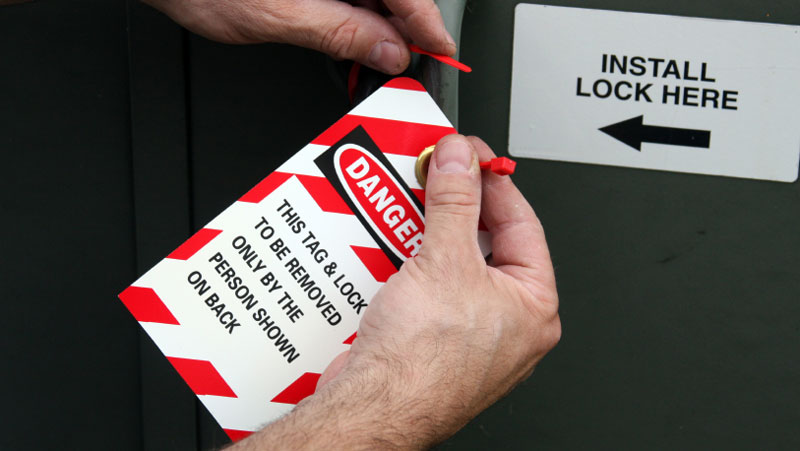Lock Out Tag Out violations are among OSHA’s top 10 most frequently cited standards, resulting in fines that can soar to $100,000 or more per violation. Usually, when OSHA finds one violation they locate many others. OSHA notes that LOTO violations account for nearly 10% of workplace injuries and fatalities every year.
On the surface, LOTO seems pretty simple: disable and lock down machinery or equipment while someone is working on it so that it doesn’t cause an injury by starting up unexpectedly. Nevertheless, the above figures make it clear that many employers are still struggling to address LOTO concerns in an effective way.
1. Get your employees on board.
LOTO violations are not always, as they are often characterized, the fault of the employer. Sometimes employees take short cuts, either because they have not been trained on the risks and procedures associated with LOTO or because there is some obstacle keeping them from following those procedures. One possible obstacle is simple inconvenience or difficulty, such as needing a footstool to reach the LOTO area and being unable to procure one. Such a problem is easily solved once it is identified.
Another obstacle could be that LOTO would keep the employee from meeting other objectives that you’ve set for him, such as asking him to complete tasks in a certain period of time without accounting for the amount of time that it takes to observe saftey protocols. Employees would often rather risk their lives than their jobs, and if they think they’re going to face disciplinary action for going “too slow” then they’re going to take their shortcuts where and when they can.
You can solve this problem by initiating a LOTO training program that targets all employees, including temporary employees. You should also ask your employees about obstacles that may be keeping them from observing LOTO procedures. Take steps to correct these problems and remove these obstacles. Doing so will make it clear that safety is important to you.
2. Perform a thorough audit of your job site.
Don’t assume that LOTO is being addressed everywhere it needs to be. If you’ve bought any new equipment recently you might be long overdue for a LOTO update.
Make sure that you have targeted all energy sources as you perform this audit. Electricity isn’t the only issue. As OSHA points out in one of its study guides, even a pully is a potential source of energy that could result in an accident if handled incorrectly.
As you perform your walkthrough pay special attention to flammables, chemicals, and heat sources in addition to electrical hazards.
3. Make sure you have adequate LOTO equipment.
Compared to OSHA fines the cost of durable, standardized, substantial and identifiable LOTO devices are negligible. Safety supply companies sell plenty of devices that meet OSHA requirements for clarity and their ability to stand up to the rigors of the workplace environment.
Remember, you must lock up what you can. Warning tags alone are usually not enough to meet LOTO regulations or to keep employees safe. Use your audit to understand exactly what you’ll need, and begin ordering it and using it as quickly as you can.
4. Schedule regular inspections.
Workplace conditions change. Employees leave or change roles. New equipment is added and old equipment is replaced. All of this can lead to LOTO oversights if you aren’t taking the time to make regular inspections. Those inspections will turn up instances in which employees are failing to meet safety standards and instances where LOTO is simply innocently being overlooked. Regular inspections can help you nail down these issues before they result in workplace fatalities, fines, or workman’s comp cases.
Carmen Rane Hudson is the content manager for Tuff Supplies, a leading provider of construction safety equipment and industrial safety apparel.
View the original article and our Inspiration here


Leave a Reply